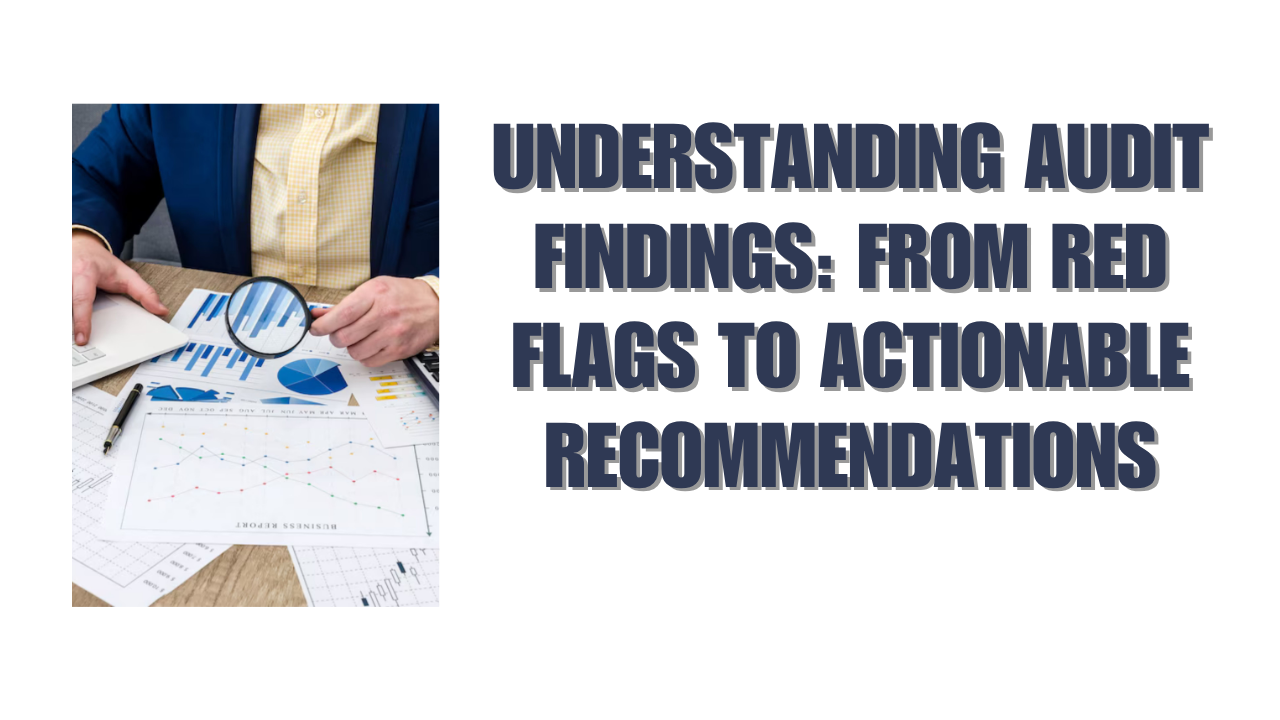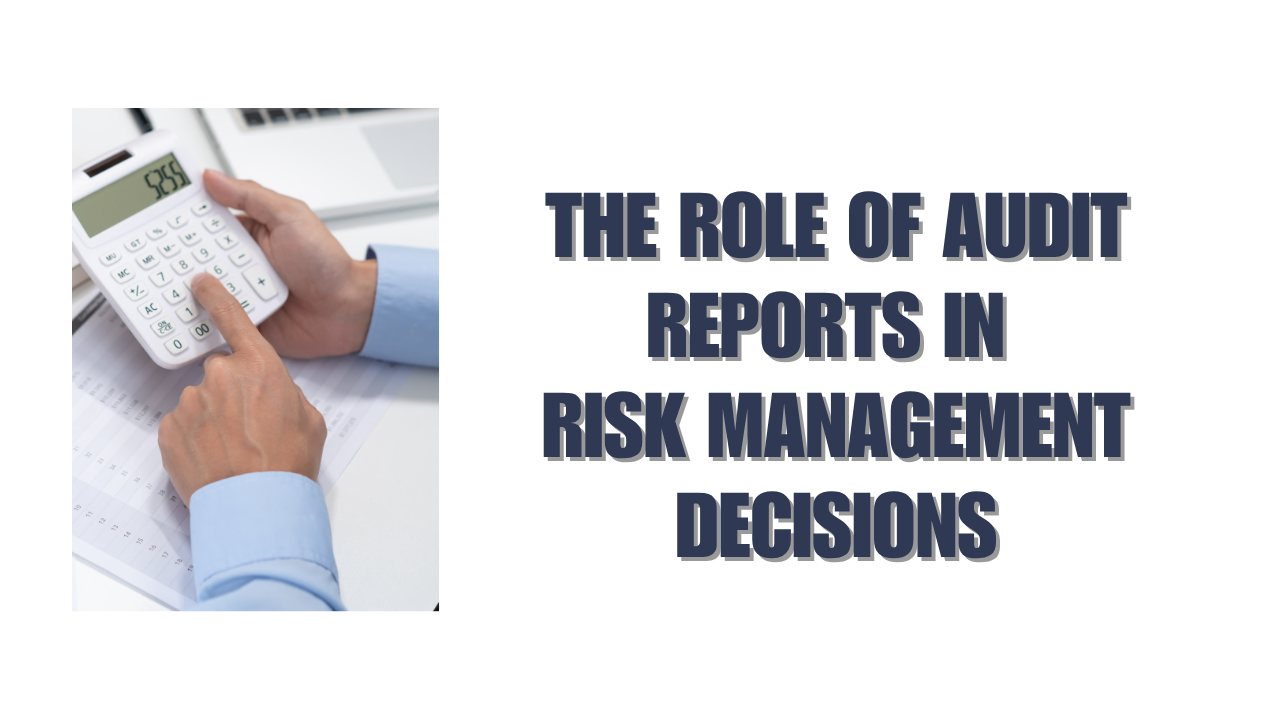Audit findings reveal much more than just problems in an organization. These findings expose discrepancies and point to areas that need improvement. They also identify risk factors that could slow down an organization’s growth and hurt its financial health. Many clients find it challenging to make sense of these findings, which makes them miss chances to improve their operations.
The audit opinion carries weight for every business. A clean opinion builds the company’s reputation and makes investors more confident. However, a qualified, adverse, or disclaimer of opinion sends warning signals about the company’s financial health and governance. A poorly written audit report can lead to penalties, legal risks, financial losses, and damage to reputation. Making sense of audit findings and observations helps organizations achieve operational excellence and stay compliant with regulations.
This piece will give you a framework to interpret audit findings. You’ll learn about common problems in business processes, financial reporting, and IT systems. We’ll also share practical ways to respond to findings. The knowledge you gain will help you turn worrying audit results into opportunities that improve your organization.
Understanding the 5 C’s Framework for Audit Findings
The 5 C’s framework forms the foundation to structure effective audit findings. Auditors use this methodical approach to communicate issues clearly and provide practical recommendations. Each finding breaks down into five distinct components that create a detailed picture of the issue and its resolution.
Criteria: Setting Standards for Comparison
Criteria establish the standards to measure actual performance. These standards typically come from:
- Regulatory requirements and legislation
- Industry best practices
- Internal policies and procedures
- Contract terms and specifications
- Historical performance metrics
The documentation of criteria needs specific identification of standard sources and their application to the auditee’s operations. To cite an instance, rather than stating “the organization should maintain proper segregation of duties,” I would reference the specific COSO Internal Control Framework principle and explain its relevance to the organization’s risk profile.
Condition: The Current Situation
The condition describes what we found during the audit – the reality versus expectations. This component needs precise, objective language without judgment or speculation. The focus stays on verifiable facts supported by evidence.
A well-crafted condition would state: “Physical count revealed 15% of inventory items (214 of 1,427) had quantity discrepancies when compared to system records” rather than noting “poor inventory management.”
Cause: Getting to the Heart of the Matter
Root cause analysis helps us understand why issues occur. Several analytical techniques help pinpoint the source:
- The 5 Whys method – asking “why” repeatedly until reaching the fundamental cause
- Fishbone (Ishikawa) diagrams – visualizing potential causes in categories like people, process, technology
- Barrier analysis – identifying failed or missing controls
- Change analysis – looking at what changed from when systems worked properly
A full cause analysis prevents quick fixes that don’t address systemic issues. Invoice errors might stem from inadequate training or poorly designed software interfaces rather than careless staff.
Consequence: Understanding the Effects
The consequence section shows the real or potential effects of the finding. We measure the impact in specific terms – financial loss, compliance risk, operational inefficiency, or reputational damage.
Risk levels (high, medium, low) help classify each finding based on likelihood and impact assessments. Management can then allocate resources appropriately. Material financial misstatements might represent high-risk findings, while documentation gaps with minimal operational impact fall into the low-risk category.
Corrective Action: Making Things Right
The final component creates a roadmap for improvement. Effective corrective actions should be:
- Specific and measurable
- Achievable within resource constraints
- Relevant to addressing the root cause
- Time-bound with clear deadlines
- Assigned to responsible parties
These actions should include immediate fixes and longer-term preventive measures. Complex issues often need a phased implementation approach. This lets organizations tackle critical vulnerabilities first while developing more detailed solutions.
The 5 C’s framework turns audit findings into powerful tools for organizational improvement. Each component builds on the others to create a clear path from problem identification to resolution.
Common Audit Findings in Business Processes
Audit professionals often find the same problems that hurt how well businesses run, how accurate they are, and their integrity. These experts keep seeing the same weak spots across different types of companies, big and small. Companies can fix these weak spots before they turn into big problems if they spot them early.
Internal Control Weaknesses in Procurement
The procurement process tends to have control problems that create financial and operational risks. The biggest issue comes from poor segregation of duties. This happens when one person handles too many parts of buying transactions. Business data shows companies lose about 5% of yearly revenue to workplace fraud. A lot of this comes from procurement fraud.
The riskiest setup lets one employee approve purchases, get deliveries, and handle payments. This setup makes it easy to create fake vendors or buy things without permission. The core team should split these duties:
- Who can approve purchases
- Who gets the items
- Who checks financial records
- Who manages inventory
Poor documentation and bad record-keeping cause problems too. When records go missing or have mistakes, it messes up audit trails and leads to money problems and compliance issues. Bad checking of records often hides how healthy a company’s finances really are.
Operational Inefficiencies in Workflow Design
Bad workflows waste resources and hurt productivity substantially. Studies show companies lose 20-30% of revenue yearly because things don’t work well. You’ll see this in bottlenecks, steps that repeat, and communication problems.
Badly designed workflows often don’t match company goals. Teams end up doing work that doesn’t add much value when processes don’t connect to what the organization wants to achieve. Many companies still use manual workflows even though they cause more mistakes. Workers waste about 22% of their time doing repetitive tasks that computers could handle.
Old systems and outdated tech slow everything down. These systems make it hard to move quickly and force people to find workarounds that bring new risks. Process mapping helps find these problems by showing each step, where things repeat, and how to make them better.
Fraud Indicators in Expense Reimbursements
Expense fraud makes up 14.5% of all workplace fraud and usually goes on for 18 months before anyone catches it. Auditors usually find four main types of this fraud.
People try to make personal purchases look like business expenses. Some make up fake expenses and try to get money back for things they never bought. Others take real expenses and make them cost more – like saying a $25 meal cost $42. The last trick involves asking for money back more than once for the same thing, usually with small changes or after waiting a while.
Auditors look for these warning signs:
- Claims without proper papers or clear descriptions
- Expenses that always stay just under approval limits
- Strange spending patterns or jumps near deadlines
- Same claims showing up again with tiny changes
Companies need specific plans to fix these audit problems. They can make procurement safer by setting clear rules about who can approve what and switching up duties. Better workflows come from mapping out processes and letting computers handle repeated tasks. Regular checks and automated systems help catch expense fraud early.
Frequent Financial Reporting Audit Issues
Audit findings in financial reporting show several critical problems that affect an organization’s financial statements. These findings reveal weak spots that could mislead stakeholders and lead to serious regulatory problems. Let’s get into the most common financial reporting issues auditors keep finding.
Misstatements in Financial Statements
Financial information sometimes fails to show a company’s true economic picture. Industry data shows auditors find material misstatements in about 9% of public company and 15% of private company audit work. These misstatements fall into three groups:
- Factual misstatements: Clear-cut errors that leave no room for debate, such as missing required disclosures or math errors
- Judgmental misstatements: Disagreements about accounting estimates that auditors find unreasonable
- Projected misstatements: Auditors’ best guess of errors in populations based on their sample testing
Most misstatements show up in estimated accounts where there’s lots of judgment involved. This needs special expertise in valuation. Management must document their reasoning behind estimates well because auditors often challenge these decisions during reviews.
Inaccurate Revenue Recognition Practices
Revenue recognition errors top the list of accounting and auditing enforcement actions. Companies recording revenue before they earn it remains the most common type of accounting manipulation.
Big cases show what this all means. Xerox Corporation pumped up revenue by $10.92 billion between 1997-2000 by wrongly speeding up revenue recognition from long-term equipment leases. In another case, Comscore’s value dropped by more than 90% after revealing wrong revenue recognition practices.
The biggest revenue recognition problems include:
- Wrong identification of performance obligations in contracts
- Mix-ups between principal and agent roles
- Bad timing of revenue recognition
- “Round-trip” deals that make revenue look bigger than it is
Revenue misstatements can twist financial statements by a lot and give investors the wrong idea about how well a company is doing.
Asset Valuation Errors and Depreciation Misjudgments
Companies don’t deal very well with asset valuation when it comes to complex calculations. This happens most with special assets spread across different locations or made up of many parts. These decisions shape budget choices and investment plans.
Depreciation mistakes usually involve:
- Wrong estimates of how long assets will last (people often think useful life equals economic life)
- Inflated residual values to cut yearly depreciation
- Skipping yearly reviews of useful lives and residual values
- Missing asset impairment checks when looking at useful life changes
Auditors often catch companies changing depreciation methods without good reasons, which messes up financial reporting consistency. Some companies also play with depreciation schedules to make certain periods look better.
A resilient infrastructure of internal controls, solid documentation of decisions, and steady accounting policies across reporting periods help fix these financial reporting issues.
IT Audit Findings and Their Implications
IT systems are the foundations of modern organizational operations. This makes IT audit findings vital for risk management. When experts explore information technology environments, they consistently find three areas of concern that can substantially affect an organization’s security posture and operational resilience.
Security Vulnerabilities in Access Controls
Access control vulnerabilities rank among the most common IT audit findings. These expose organizations to potential breaches, data loss, and unauthorized access. Several common patterns show these problems:
- Users have excessive permissions, violating least privilege principles
- Users can bypass access checks by modifying URLs or application parameters
- Insecure direct object references let users view others’ accounts
- Critical API functions lack access controls (POST, PUT, DELETE)
- Users can manipulate access tokens or cookies’ metadata to gain higher privileges
These vulnerabilities only work in untrusted environments where attackers can modify access control mechanisms or metadata. So, organizations should implement server-side verification and deny access by default, except for public resources.
Lack of Disaster Recovery Planning
Most organizations don’t prepare well enough for IT emergencies. This leaves them vulnerable to system failures and cyberattacks. The planning gap has serious consequences:
Organizations without business continuity and disaster recovery plans risk extended downtime, critical data loss, and reputation damage. Many businesses skip investing in disaster recovery because they think it’s too complex and resource-intensive. Yet, the Federal Emergency Management Agency reports nearly 40% of small businesses never reopen following a disaster.
On top of that, lack of regular testing makes this vulnerability worse. Only 46% of organizations with recovery plans test them yearly. This often leads to outdated assumptions and unrealistic recovery time objectives.
Noncompliance with IT Governance Policies
Auditors often find gaps between an organization’s IT practices and their established protocols or regulatory requirements. Poor governance structures cause this noncompliance. Here, accountability becomes “a shared fiction—everyone believes someone else is handling it”.
These organizations face increased security vulnerabilities, compliance violations, and operational inefficiencies. Proper IT governance helps identify, assess, and mitigate risks. It also ensures compliance with standards like GDPR, HIPAA, or SOX.
These findings show that technology vulnerabilities go beyond technical issues. They point to governance and process failures that need structural fixes at the organizational level.
How to Respond to and Close Audit Findings
A good response to audit findings can turn potential problems into chances for improvement. The right way to handle audit results helps fix immediate problems and makes organizational processes stronger over time.
Original Review and Clarification of Findings
The first step to address any audit finding needs a really good understanding of what was found. You should review the details right after getting audit results through discussions, debriefing sessions, and formal reports. Without doubt, you need clarity – if something isn’t clear, ask the auditors for clarification right away. The focus should be on fixing immediate problems to ensure safety and compliance, but this is just the start of a complete response process.
Root Cause Analysis Using the 5 Whys
After understanding the finding, you need to find out why it happened. The 5 Whys technique helps uncover the mechanisms by asking “why” until you reach the basic problem. This method needs you to:
- Get a team that knows the process
- State the problem clearly
- Ask “why” the problem happened
- Ask “why” four more times for each answer
- Spot the root cause
- Fix the basic problem
- Watch your fixes
During this process, you should look at why the problem exists and why internal controls missed it before auditors found it.
Developing and Tracking Corrective Action Plans
A Corrective Action Plan (CAP) shows the path to fix audit findings. A CAP that works has:
- Actions that target each finding
- People responsible for getting things done
- Ways to check each action
- Deadlines you can meet
- Potential risks if actions stop
CAPs need to be SMART: Specific, Measurable, Assignable, Realistic, and Time-related. This creates clear accountability throughout the fix-it processes.
Submitting Evidence for Finding Closure
Closing an audit finding officially needs complete documentation that shows finished corrective actions before the deadline. Your evidence should prove both quick fixes and system-wide improvements that address root causes. Note that findings usually need resolution within 90 days after the audit ends, though time frames might change based on how serious they are.
Conclusion
Organizations need to know how to understand audit findings to achieve operational excellence and regulatory compliance. This piece shows how audit findings work as valuable tools rather than just criticisms. They create a roadmap that leads to improvement when teams interpret and address them properly.
The 5 C’s framework gives a complete structure to understand and communicate audit findings. This approach will give a clear and actionable path by looking at criteria, condition, cause, consequence, and corrective action. Companies that become skilled at using this framework turn problems into growth opportunities.
Business process findings usually fall into three groups: internal control weaknesses, operational inefficiencies, and fraud indicators. These concerns actually show where companies can build stronger processes. Financial reporting findings like misstatements, revenue recognition errors, and asset valuation issues point to better accounting practices and controls.
IT audit findings need special focus because they affect organizational security and resilience deeply. Access control vulnerabilities, poor disaster recovery planning, and governance non-compliance can create serious risks if ignored.
A well-laid-out approach helps teams respond to audit findings effectively. Start by getting a full picture of each finding. Use techniques like the 5 Whys to analyze root causes. Create complete action plans with clear responsibilities. Submit the right evidence to close findings on time.
Without doubt, successful organizations see audit findings as valuable lessons that lead to continuous improvement. They know that fixing these issues creates stronger internal controls, boosts operational efficiency, and alleviates risks. What looks like red flags at first become stepping stones to excellence.
Your next audit should reflect this point of view. Welcome findings as chances to spot blind spots in your processes and systems. The real goal isn’t just passing an audit – it’s building a stronger, more resilient organization.
FAQs
Q1. What are the key components of an audit finding?
An audit finding typically consists of five key components, known as the 5 C’s: Criteria (the standard or benchmark), Condition (what was actually found), Cause (root cause analysis), Consequence (impact of the finding), and Corrective Action (plan for improvement).
Q2. How should organizations respond to audit findings?
Organizations should respond to audit findings by first reviewing and clarifying the issues, then conducting a root cause analysis using techniques like the 5 Whys. Next, they should develop comprehensive corrective action plans with clear accountabilities and deadlines. Finally, they need to submit evidence to close the findings within required timeframes.
Q3. What are some common audit findings in business processes?
Common audit findings in business processes include internal control weaknesses in procurement, operational inefficiencies in workflow design, and fraud indicators in expense reimbursements. These issues often point to areas where organizations can strengthen their processes and controls.
Q4. How do IT audit findings impact an organization?
IT audit findings can significantly impact an organization’s security posture and operational resilience. Common issues include security vulnerabilities in access controls, lack of disaster recovery planning, and noncompliance with IT governance policies. These findings highlight potential risks that need to be addressed to ensure data security and business continuity.
Q5. What is the importance of understanding audit findings?
Understanding audit findings is crucial as it allows organizations to transform potential problems into opportunities for improvement. By properly interpreting and addressing audit results, companies can strengthen internal controls, enhance operational efficiency, mitigate risks, and ultimately build a more resilient organization.






